A male Brazilian Tanager that shines like a neon light even in the dark night is truly captivating. Its plumage shows a bright crimson red with black wings and tail.
It is a fairly large bird with short but thick bills. Males are more colorful displaying the crimson red plumage, while the females are mostly brown in color with a cinnamon tone down the belly.
They are normally found in the eastern part of Brazil, but you can also find them stretching to as far as northeastern Argentina and at the south towards Santa Catarina as well as Misiones.
These birds feed on fruit mostly. They love living in natural habitats, shrubby areas, swamps, and gardens, where there is enough food.
They tend to become aggressive in the presence of other birds who are in competition with the available food around their area. While these birds are decreasing in population in some areas due to decrease in habitat, bird caging and the like, they are still not considered endangered according to the IUCN.
The Brazilian Tanager is indeed a visually attractive bird that we should know more of. Enjoy the rest of the post and see how the bird looks up close.
There is also a video that you can watch, so you can see the bird in action.
Presenting The Brazilian Tanager
This is a picture of a male Brazilian Tanager displaying his bright crimson red plumage with black wings and tail. The bill is also black with a silver tone below.
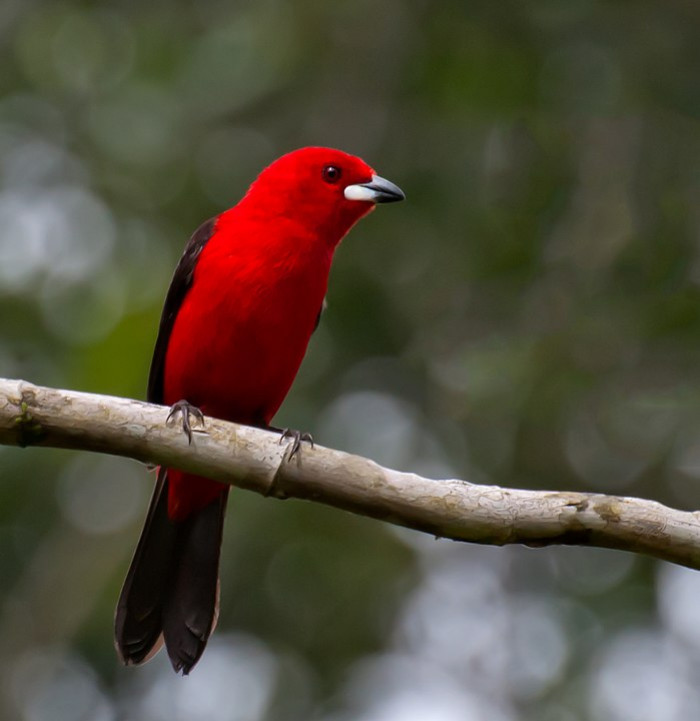
Female Brazilian Tanager
The female Brazilian Tanager are mostly brown in color with a cinnamon colored belly. They do not have the silver lower bill like the males have.
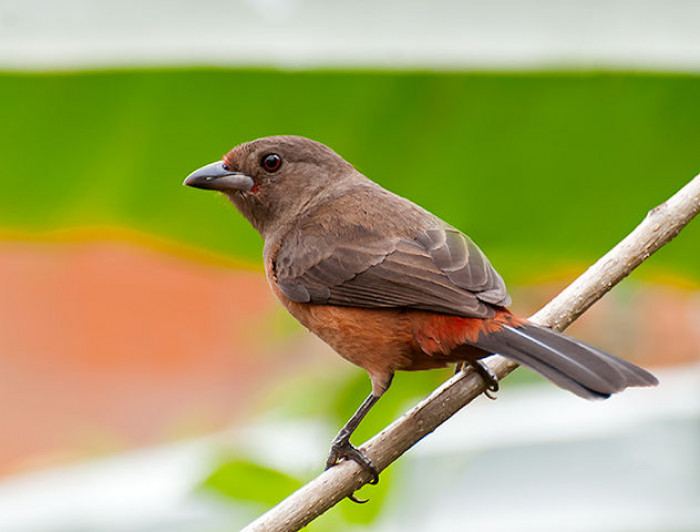
A Local Bird In Brazil
You can find these birds easily in Paraiba, Brazil down to Santa Catarina.
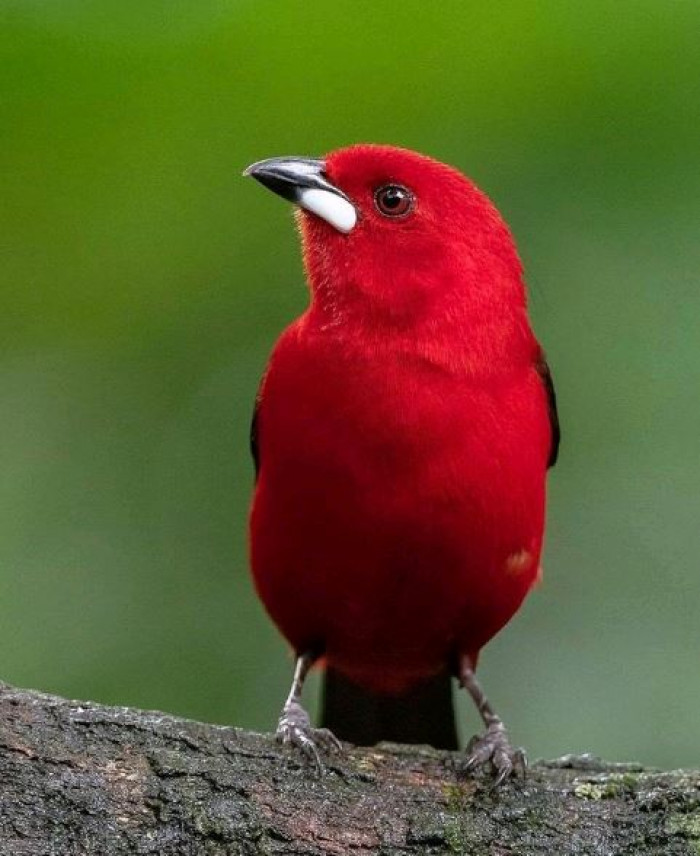
Habitat
Brazilian Tanagers enjoys living in areas where food is abundant. They nest around natural forests but you may also find them in watery areas like the edges of the forest near lakes and ponds.
They have also adjusted their habitat in cultivated lands probably due to the decrease of forests and natural habitats.
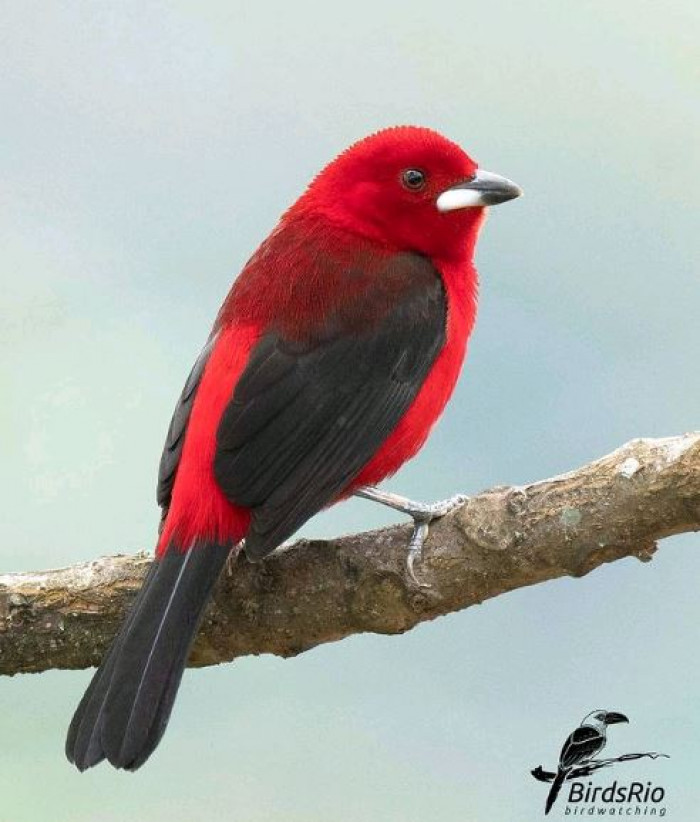
These Birds Are Frugivorous
They like eating fruits like guava, papaya, Cecropia, and more! They also learned how to eat some insects and worms.
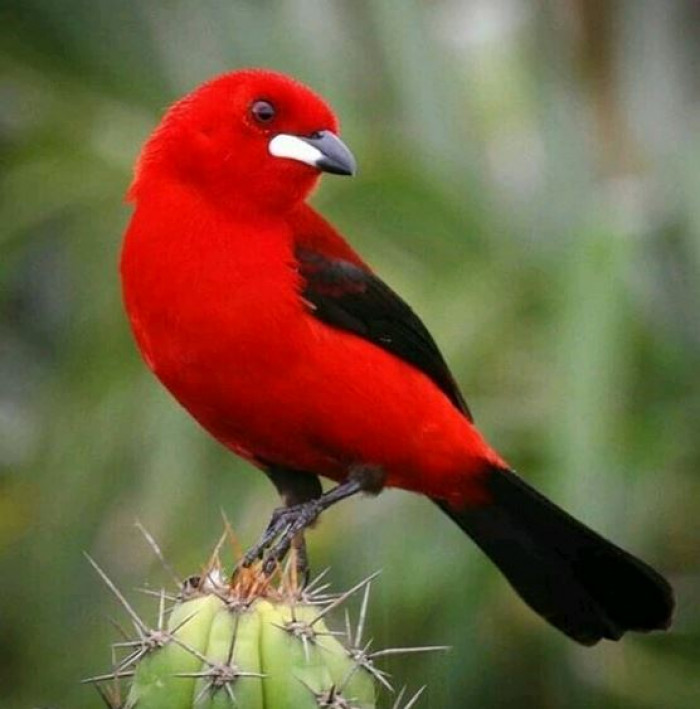
Breeding Season
Breeding season takes place during the months of December to March. You will see these birds building cup shaped nests that are made from fibrous materials from fruit plants and grass.
The female normally lays 2 to 3 eggs that incubates for 13 days. The chicks are then fledged after 17 days from hatching.
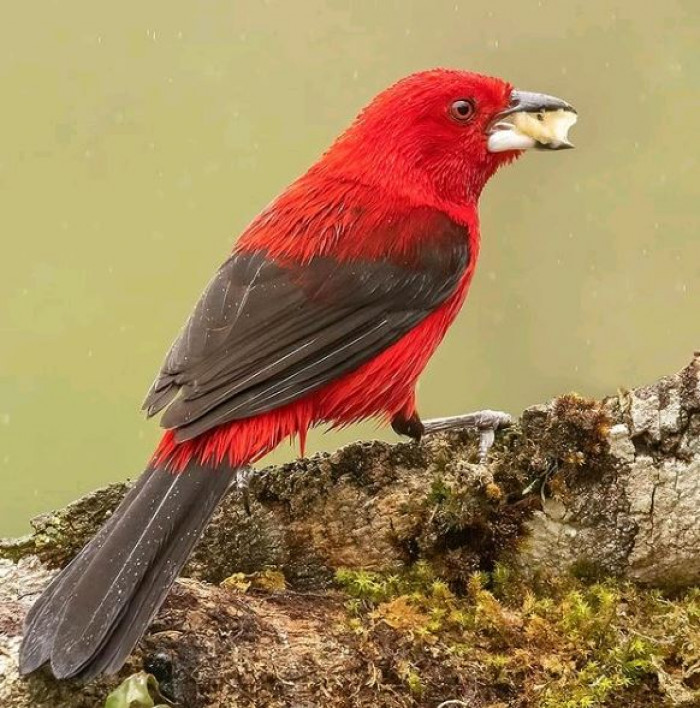
Population
In spite of the increase of demand in bird caging for trade, the Brazilian Tanagers proves to be stable in population. They are quite flexible in adapting changes in the environment caused by humans.

What A Stunning Bird!

Watch Them Here
To know more about the Brazilian Tanager, watch them here and see them live in action.
These frugivorous and highly attractive birds are definitely one of the species we should all take care of. With their bright crimson red plumage that colors even the darkest sky, we surely are lucky to have such wonderful creatures that are still present up to this day.
If you liked the post, don’t forget to share it with your family and friends. Have a nice day everyone!

